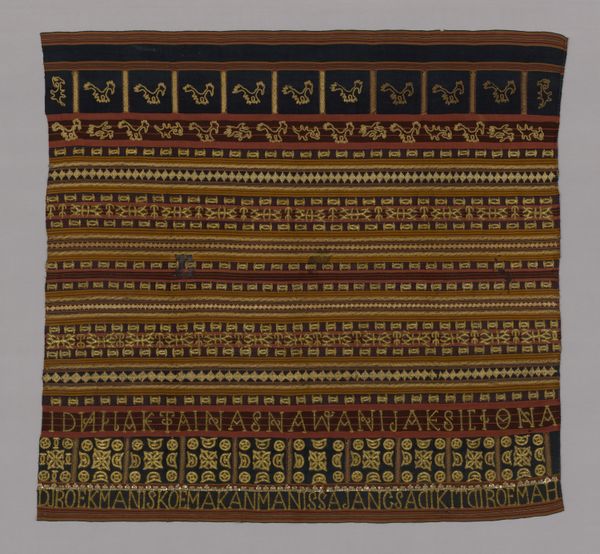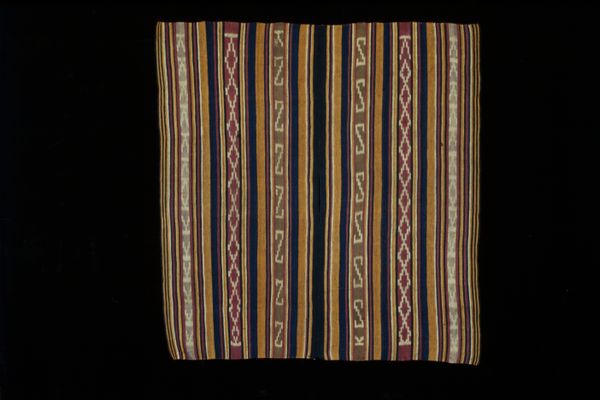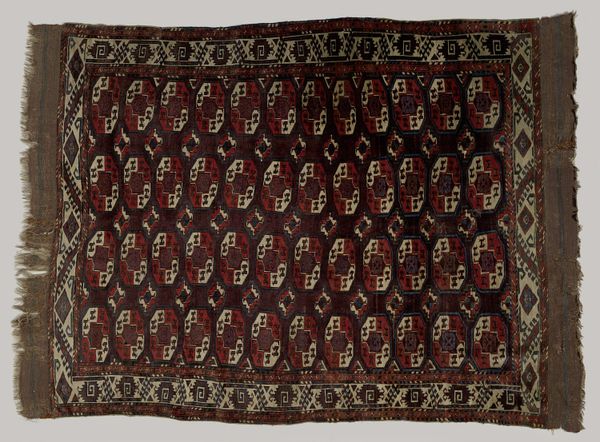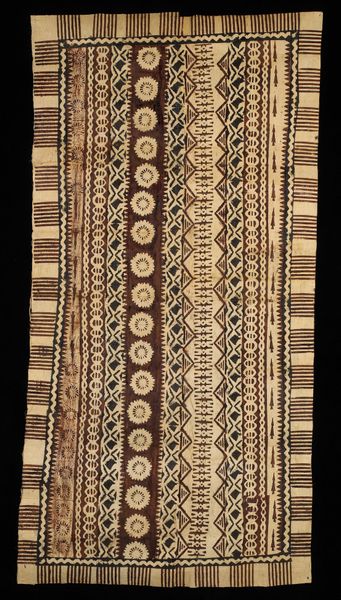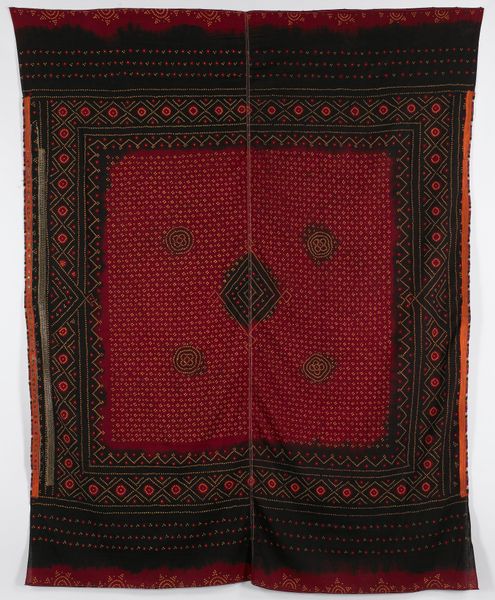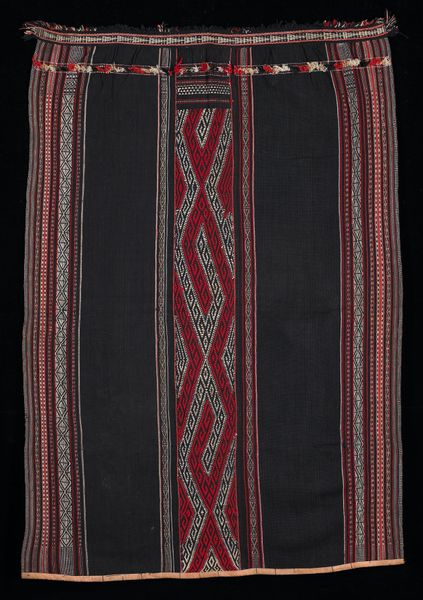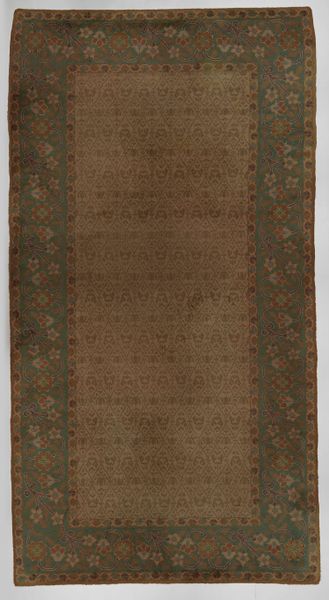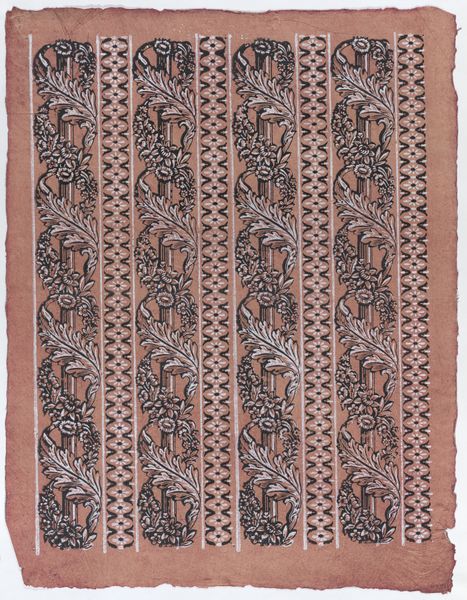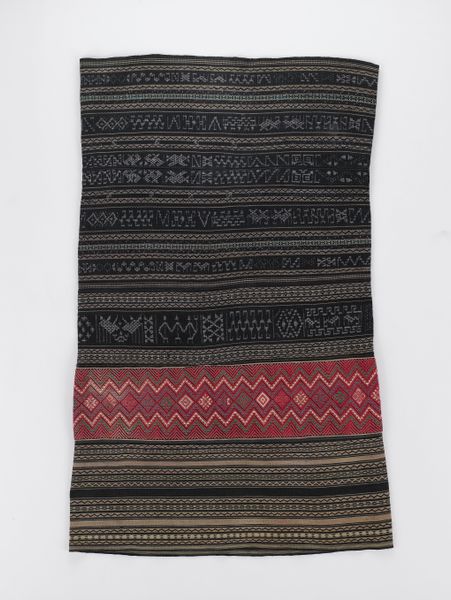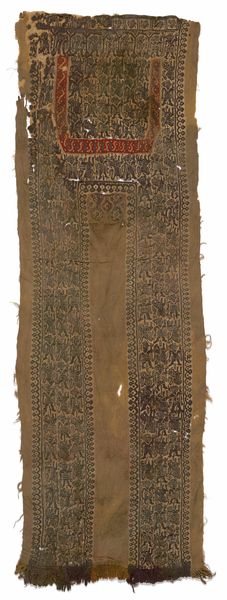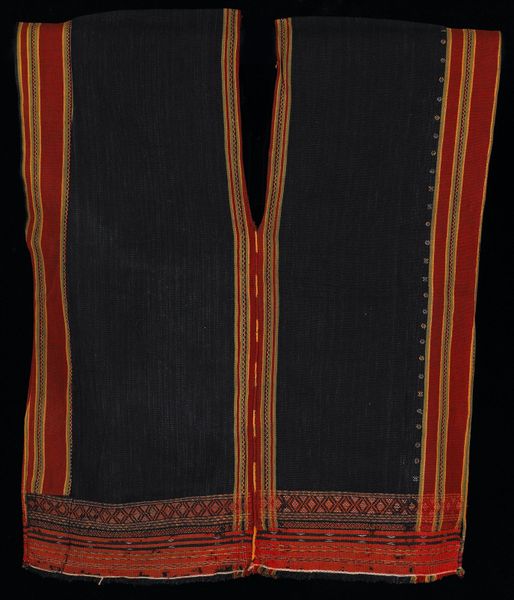
fibre-art, textile
#
fibre-art
#
textile
#
geometric pattern
Dimensions: 67 × 117.6 cm (26 3/ 8 × 46 1/4 in.)
Copyright: Public Domain
This ceremonial skirt, or tapis, was made by Paminggir people, and is now held at the Art Institute of Chicago. Notice the recurring motif of a stylized house. These aren't mere dwellings; they are potent symbols of ancestry and social status. This symbol echoes in numerous cultures, from the depiction of sacred temples in ancient Mesopotamian art to the family crests adorning European heraldry, each reflecting a longing for rootedness and identity. The house motif transcends mere shelter, becoming a vessel of cultural memory. Consider also the abstract geometric patterns that fill the tapis. These designs vibrate with a hidden language, passed down through generations. Like the spirals found in ancient Minoan art or the complex knotwork of Celtic designs, they speak to the human need to impose order on the chaos of existence. They tap into a subconscious yearning for harmony and understanding, a visual mantra repeated across cultures and ages. The tapis is more than just a piece of fabric; it’s a rich repository of cultural memory, weaving together the threads of human experience across time and space.
Comments
No comments
Be the first to comment and join the conversation on the ultimate creative platform.
